Want to know if your cookies will come out well with bread flour? Come along.
All flour looks the same and it’s easy to think you can use anyone you find in your cookie dough. Well, maybe you can but not all types of flour will give you the same result. Some types of flour will make them chewy, and some make them crunchy.
All-purpose flour is the most sought after for all types of cooking but who says you must keep it at that? Find out if bread flour stands a chance with cookies. Who knows? You just may have discovered a wonder.
What is bread flour?
Bread flour is a high-protein flour made with hard wheat. This flour has more gluten than many common flours because of its high protein content.
Bread flour is preferred flour for baking bread because it develops gluten well. The gluten network is responsible for the rising of the dough, the strength, and the chewy texture of the bread. The protein content in bread flour ranges from 11-13%, depending on the brand.
Apart from bread, the high-gluten content of bread flour makes it suitable for other items such as bagels and pizza dough. The gluten content of bread flour also makes it suitable for making pasta, white sauce, and roux for thickening soups.
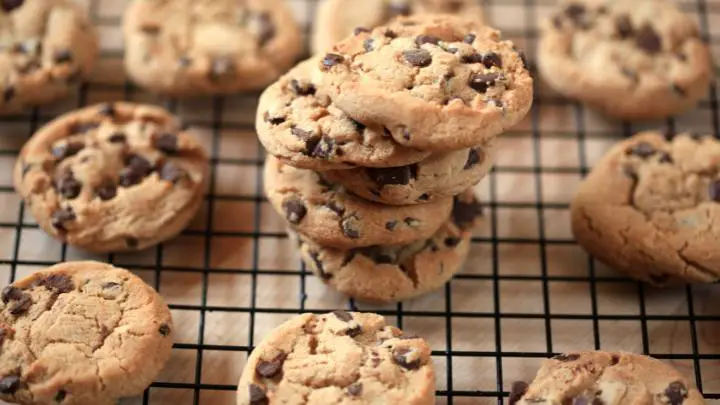
Yes, you can make cookies using bread flour if that is what you have available. However, the cookies will turn out differently than when you use all-purpose flour. Cookies made with bread flour come out chewy and crispy if you get it right.
The cookies will also have more volume. The protein content, eggs, and butter form a strong gluten network that gives the cookies their distinct texture.
Furthermore, because of its high protein content, bread flour absorbs more liquid and can hold its shape better than low-protein flour. It also makes the cookies rise outward instead of upward.
Yes, you can. Bread flour is an excellent substitute for all-purpose flour in oatmeal cookies. The cookies will be chewier, thicker, and less prone to spreading while baking.
Not many people appreciate chewy cookies but if you don’t mind, try out a different oatmeal cookies recipe with bread flour.
Many bakers prefer bread flour for chocolate chip cookies to all-purpose flour. The gluten content supports the intended texture of this type of cookie.
However, it remains a matter of preference. If you prefer the crunchy, airy texture all-purpose flour gives, stick with it.
How to replace all-purpose flour with bread flour
Use bread flour in a 1:1 substitution when making cookies or any other baked goods. Bread flour has a high protein content and will absorb more liquid than all-purpose flour.
If your dough feels too dry, add 1-2 teaspoons more liquid for every cup of bread flour. Adding more liquid will make your cookies less tough and you will appreciate the chewiness better.
Additionally, if you feel the cookies might come out too tough, use 75% bread flour and 25% all-purpose flour to create a balanced texture.
This recipe uses a blend of bread flour and all-purpose flour to balance texture and flavor.
What you need
- 2 ¼ cups of bread flour
- 1 ¼ cups of all-purpose flour
- 2 large eggs
- 2 tablespoons of baking soda
- 1 ¼ cups of salted butter at room temperature
- 1 ½ cups of dark brown sugar
- ½ cup of granulated white sugar
- 1 tablespoon vanilla extract
- 1 tablespoon of kosher salt
- 2 cups of chocolate chips or any baking chips of your choice
- Stand mixer
- Large bowls
- Baking sheets
Instructions
- Preheat the oven to 350°F (177°C)
- Mix all dry ingredients in a clean bowl
- Fix the paddle attachment of your stand mixer and beat the butter until it is light and fluffy
- Add the brown and white sugar and vanilla extract and beat for an extra two minutes
- Scrape the sides of the bowl to gather the gather the mixture
- Afterward, break one egg and beat for a minute or less. Scrape the sides of the bowl again, add the second egg, and beat for one minute until you have a uniform mixture
- Add the dry ingredients to the bowl of liquid and mix until the dry ingredients have absorbed the liquid
- You can take the bowl of the mixer and add the chocolate chips to the dough
- Cover the dough with plastic wrap or aluminum foil and leave it to chill in the refrigerator for 30-45 minutes. Chilling cookie dough before baking allows the fats to cool and prevent too much spreading while the cookies bake
- Note: Do not line the baking sheet with parchment paper. Otherwise, the dough will spread as it bakes
- Use the cookie scoop to take some dough and roll it into a ball
- Do not overcrowd the baking sheet with dough. There should be at least three inches of space between them
- Bake for 12-14 minutes. To avoid ending up with hard cookies, take them out when they are 70% baked and leave them to cool for 20-30 minutes on the baking sheet before transferring them to a cooling rack
- Serve or store the cookies in a cookie jar
Difference between bread flour and all-purpose flour
The differences between these two types of flour are seen in the type of wheat they are made from, their gluten content, general purposes, and several other factors.
Most types of flour are made from wheat. Wheat can be hard or soft, depending on the texture of its endosperm.
Hard wheat has a hard endosperm and has less starch and more protein. On the other hand, soft wheat has a soft endosperm, more starch, and less protein.
All-purpose flour is a mix of hard and soft wheat and has a protein content between 9 to 11%, whereas bread flour is made from hard wheat and has a protein content between 11 to 13%.
This protein present in this flour is known as gluten, and it is responsible for the elastic, stretchy, and airy texture of baked goods. The more the gluten in a type of flour and the more it develops, the denser and chewier the baked goods turn out.
The higher gluten content in bread flour explains its elastic, stretchy, and chewy texture. However, this texture is not highly appreciated in baked goods like cookies. This is why you should not overmix cookie dough made with bread flour.
On the other hand, all-purpose flour contains just enough gluten that is necessary for baked goods to have an airy, crunchy, and slightly dense texture. However, both flours can be used interchangeably in a ratio of 1:1.
100% whole wheat flour
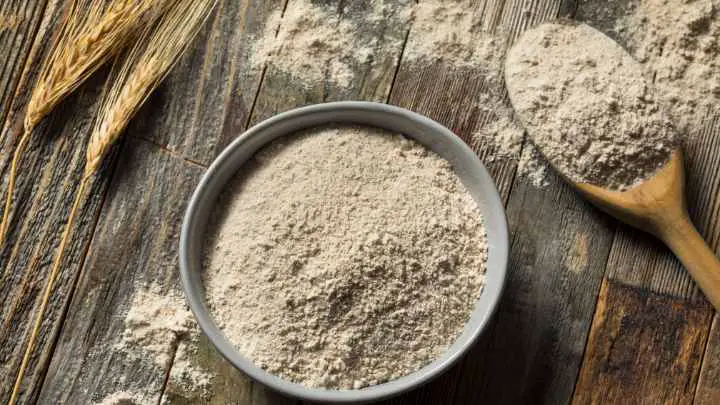
100% whole wheat flour has a higher protein content than bread flour. The cookies will come out tougher and chewier.
If you decide to use 100% whole wheat flour, mix it with all-purpose flour in a 50:50 ratio. You can also add more liquid to make the cookies less dense.
Coconut flour
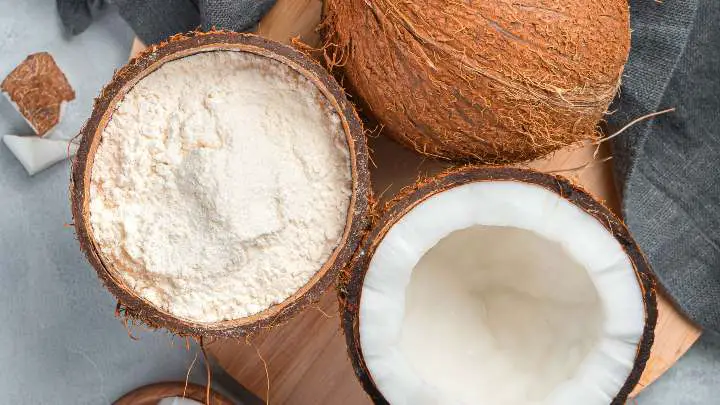
Coconut flour adds an extra flavor to the cookies. However, it is more absorbent than all-purpose flour and will lead to crumbly dough and cookies. Mix coconut flour and all-purpose flour in equal ratios to create a better texture and retain the coconut flavor.
Oat flour
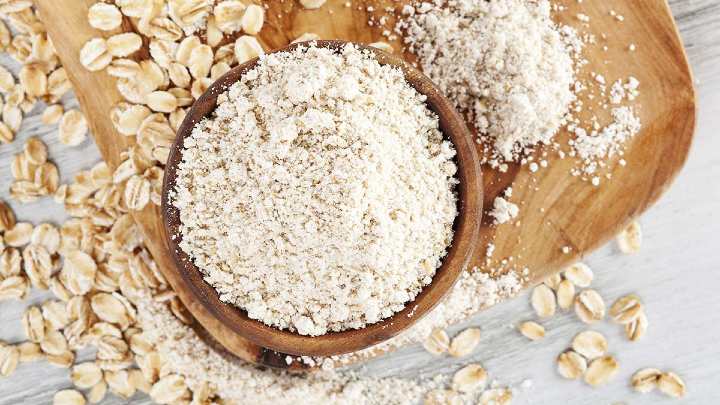
Oat flour is a perfect substitute when making oat-flour chocolate chip cookies. It is a little sweeter than regular flour and lighter too. As gluten-free flour, it will require more eggs and xanthan gum to bind the dough together.
Spelt flour
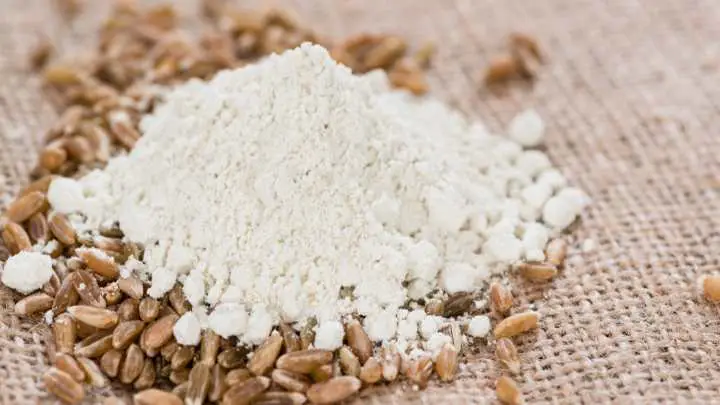
Spelt flour comes close to all-purpose flour in protein content. You can use a cup-for-cup substitution when making cookies.
However, spelt flour will require more liquid because the batter tends to come out drier than usual. If you need something close to the texture bread flour gives you, try spelt flour.
Self-rising flour
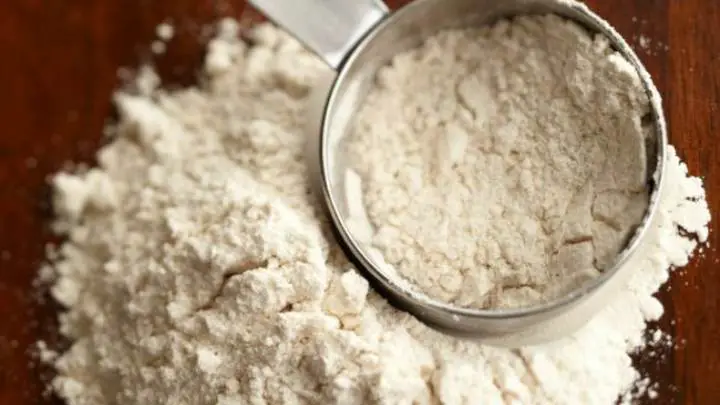
Self-rising flour is all-purpose flour mixed with baking powder. It has the same protein and gluten content as all-purpose flour. The lower gluten content means the dough will have a weak gluten network.
However, self-rising flour will rise too much in the oven and result in cookies that are too soft. Also, if you add extra baking powder, the cookies will come out too flat and fluffy.
The best way to use self-rising flour (if you choose to), is to mix it with plain flour and probably skip the extra baking powder or use less of what the recipe requires.
Cassava flour

If you are eating gluten-free or vegan, cassava flour is a perfect substitute for cookies. It will give you chewy cookies like those made with bread flour. Cassava flour is lighter than all-purpose flour but more absorbent.
You make your cookies less dense by replacing 1 cup of all-purpose flour with ¾ cup of cassava flour. You can add more liquid or flour until you get your desired texture.
Almond flour
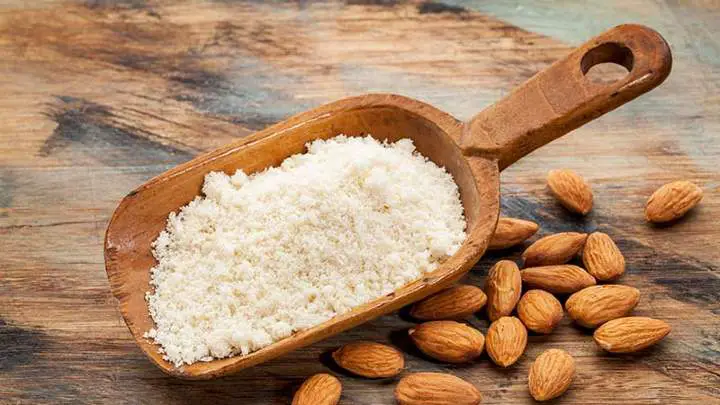
Almond flour is a gluten-free flour like cassava flour and is a good substitute for all-purpose flour in cookies. It is light and will require a binding agent like xanthan gum to hold the dough together and improve the texture of the cookies.
Use ¾ cup of almond flour for every cup of all-purpose flour.
FAQs
Can you make cookies with cake flour?
Cake flour is not the go-to flour for cookies, but if you do not mind the cake-like texture, you can make do with it. Cookies made with cake flour have a delicate texture. They are fluffy and crumbly, almost falling apart when they come out of the oven.
The soft texture of cookies made with cake flour is due to the low gluten content in the flour. Gluten is what makes dough bind together and have a firm texture. Without it, baked goods won’t hold well.
Can you make cookies with pastry flour?
You can make cookies with pastry flour if you run out of all-purpose flour and don’t want high-gluten flour like bread flour. The cookies will be slightly chewy but with a flakey, crumbly texture.
Is bread flour good for muffins?
Bread flour is just as good for muffins as it is for cookies. But your muffins will be chewy and dense. If you don’t mind, make the substitution and change your recipe a bit.
What is the best flour for cookies?
Cookies will never go wrong with all-purpose flour. The flour has just the best composition to give you your desired texture and weight.
Conclusion
Bread flour won’t be such a bad choice for making cookies. If you don’t mind your cookies chewy and dense, I guess you’ve found another substitute. Moreover, it wouldn’t hurt to switch up your cookie’s texture on some mornings, would it?
If the chewy and tough texture is too much for you, you can lighten up the dough with a little more liquid. You can also add all-purpose flour to bread flour to loosen the gluten network.
Finally, see a list of clues that help you know when your cookies are done and ready to be taken out of the oven.
Thanks for reading.

